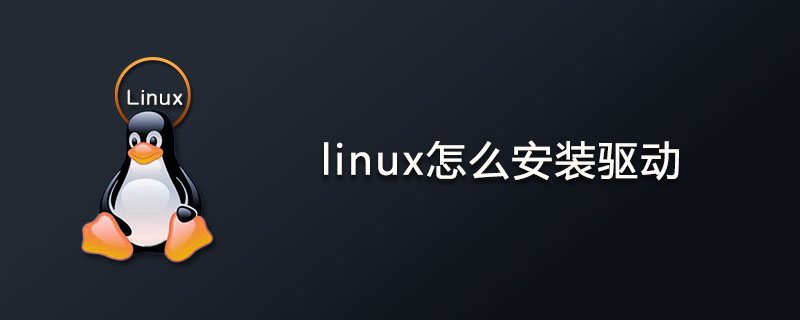Home >Operation and Maintenance >Linux Operation and Maintenance >How to install driver in linux?

#Linux drivers generally come in two formats: tar and rpm format.
1. rpm installation steps:
1. Copy the driver file bcm5700-.src.rpm to a temporary directory, and install it in this directory Run the following command in:
rpm –ivh bcm5700-.src.rpm
2. Run the following command to switch to the driver directory:
cd /usr/src/redhat /SPECS/
3. A file named bcm5700.spec will be generated in this directory. Run the following command to compile the driver:
rpmbuild –bb bcm5700.spec (for 4. x.x version of RPM is applicable) or rpm -bb bcm5700.spec
4. Run the following command to switch to the RPM directory:
cd /usr/src/redhat/RPMS/i386/
5. Run the following command to install the driver:
rpm –ivh bcm5700-.i386.rpm (For Red Hat 7.2, 7.3, 2.1AS and other systems containing older versions of drivers, you need to use -- force parameter, force the new driver to replace the old version driver that comes with the system)
6. Run the following command to load the driver module:
insmod bcm5700
7. Run kudzu command, the system will automatically search for the hardware and configure it.
Or restart the system. During the startup process, the system will automatically find the hardware and configure it accordingly.
2. Installation steps in tar format:
1. Copy the driver compressed file bcm5700-.tar.gz to a temporary directory and use the following command to unzip it Compression:
tar xvzf bcm5700-.tar.gz
2. Build the driver to run the kernel loadable module
cd bcm5700-/src
make
3. Load test
insmod bcm5700
4. Load driver
make install
5. Restart the system, Find the hardware during the startup process and configure it accordingly.
Or run the kudzu command directly, the system will automatically search for the hardware and configure it.
The above is the detailed content of How to install driver in linux?. For more information, please follow other related articles on the PHP Chinese website!